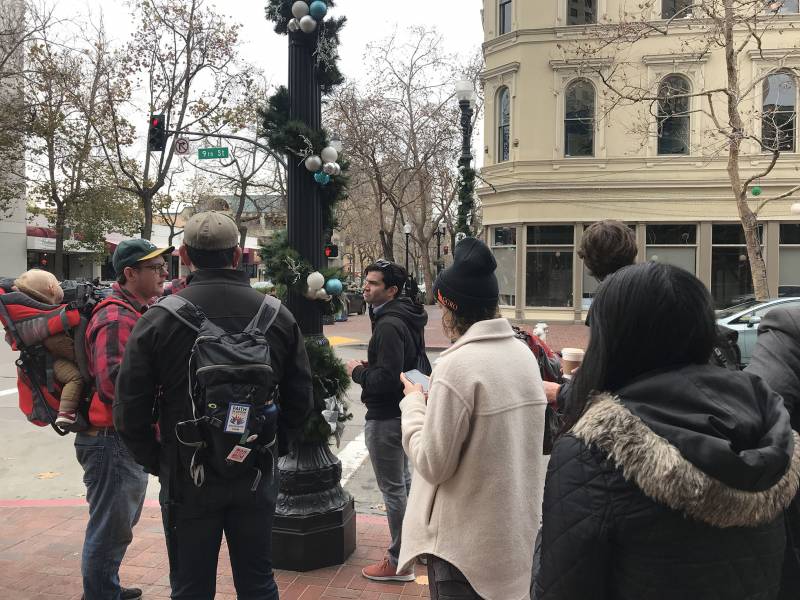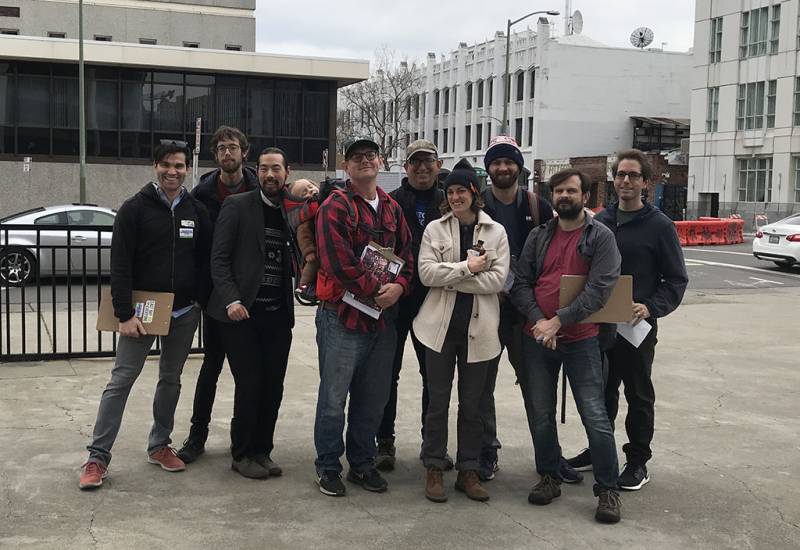As groups hoping to amend parts of Proposition 13 continue working to rally support, one tactic they're using is a walking tour.
Saturday's tour through downtown Oakland was led by Derek Sagehorn, a member of East Bay for Everyone. The walking tour is a way to help interested parties better visualize the impact of Prop 13 over the years.
The tour was attended by about 10 people, and lasted 90 minutes. During that time, Sagehorn stopped at various locations — including corporate buildings, public buildings and empty storefronts.

At one point, Sagehorn identified two buildings on 9th Street and Broadway as examples of landlords who pay small property tax rates from decades ago, but continue to benefit from rising market values as they charge high rents and pocket the difference.
"Two empty storefronts on Oakland's main boulevard, even though the landlords here are paying pennies on the dollar," Sagehorn said.
The tour is part of a larger campaign known as the Schools & Communities First initiative, whose organizers are collecting signatures to put a measure on next November's ballot that would change language around how Prop 13 applies to taxes on commercial property.
Supporters of the initiative say that should this measure pass, large corporations would be taxed significantly more than they currently are and that the extra tax revenue would be put into local governments and education.
But opponents argue that the creation of a "split roll" tax would only increase costs for everyone.
The group opposing the change, known as the Californians to Stop Higher Property Taxes, argues that many small businesses rent their business property from large corporations. So if the latter is forced to pay higher taxes, they'll pass off those increased costs to the small business owners, who in turn would have to raise costs for their goods and services and — ultimately — customers would be left to pick up the tab.
They also claim the measure falls short on accountability, asserting that it provides "zero requirements on how the money should be spent."

